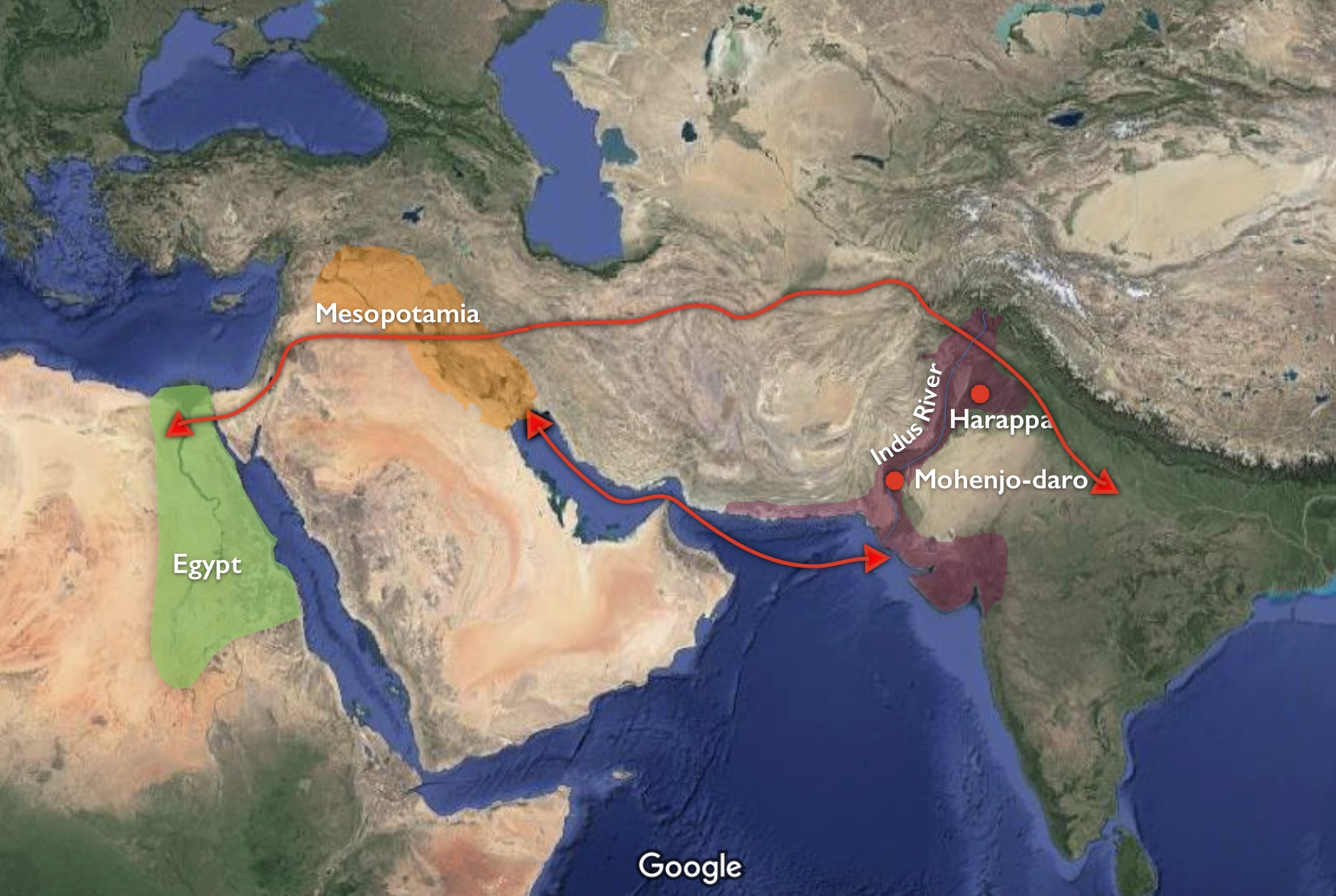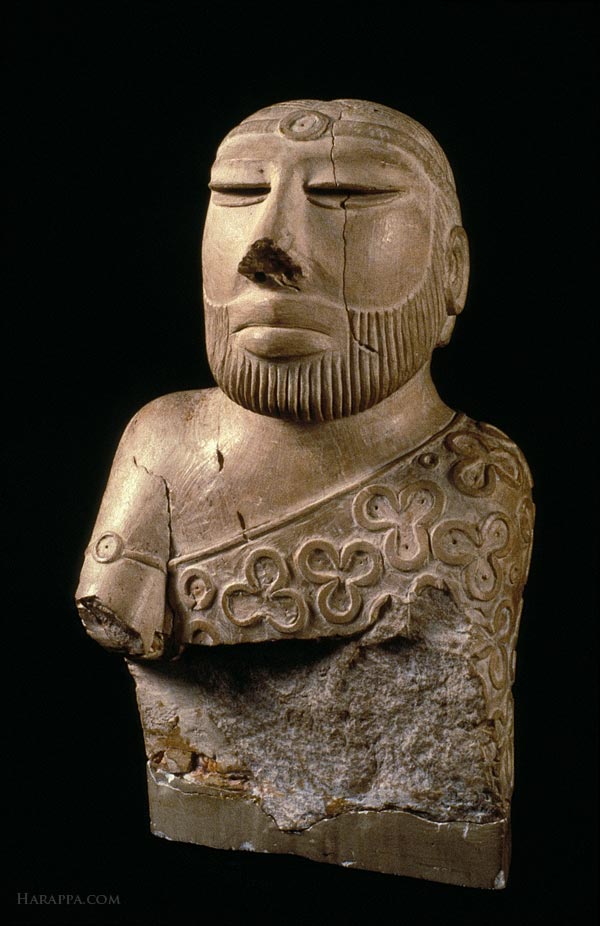
Priest King, Mohenjo-daro, white, low fired steatite, 17.5 x 11 cm (photo: Harappa.com; National Museum, Karachi)
An intricate statue, carved out of steatite more than four thousand years ago, Priest-King (as the figure has come to be known) is among the most recognizable artifacts from the Indus Valley Civilization, one of the oldest and largest Bronze Age civilizations in the world.
Depicted with half-closed eyes, curved ears, a beard, and thick lips, the figure in this sculpture wears a garment draped over his left shoulder and tucked under his (now-broken) right arm. The surface of the garment has raised trefoil motifs and circles carved in shallow relief. The figure’s hair is parted in the middle and held together by a diadem set with a circular ornament, matching the one he wears on his right upper arm.
While it’s difficult to know the original appearance of the sculpture, a fragment of shell inlay was recovered from one of its eyes, and traces of red pigment remain in the garment’s design, indicating that it might originally have been colored with dye and embellished with other materials. The incised lines carved to represent his beard extend into the area of the cheeks and were never polished, suggesting that the sculpture remained unfinished.
The small, 18 cm tall bust dates back to the Mature Harappan Period. It was excavated at the site of Mohenjo-daro in the present-day Sindh province of Pakistan by the archaeologist Kashinath Narayan Dikshit during a 1925–26 excavation by the Archaeological Survey of India.
Reading the material remains of an ancient civilization
Mohenjo-daro was an important prehistoric city from the Indus Valley civilization (sometimes referred to as the Harappan Civilization), known for its well-planned cities, large-scale architecture, and one of the earliest urban sanitation systems in the world. Named after the Indus River, along whose banks the civilization developed, the Indus Valley Civilization encompassed a vast swath of present-day eastern Pakistan and northwestern India. Although there have been multiple excavations, archaeological explorations, and studies of sites associated with the civilization, information about this ancient culture is still limited because their script remains undeciphered.
Our knowledge of the Indus Valley Civilization is mainly premised on the scholarly analysis of its material remains. The predominant objects found in most Indus Valley sites are seals and terracotta figurines of animals and humans. The seals, which depict animals, and have lines of script, are understood to have been used primarily in trade as a designatory device.
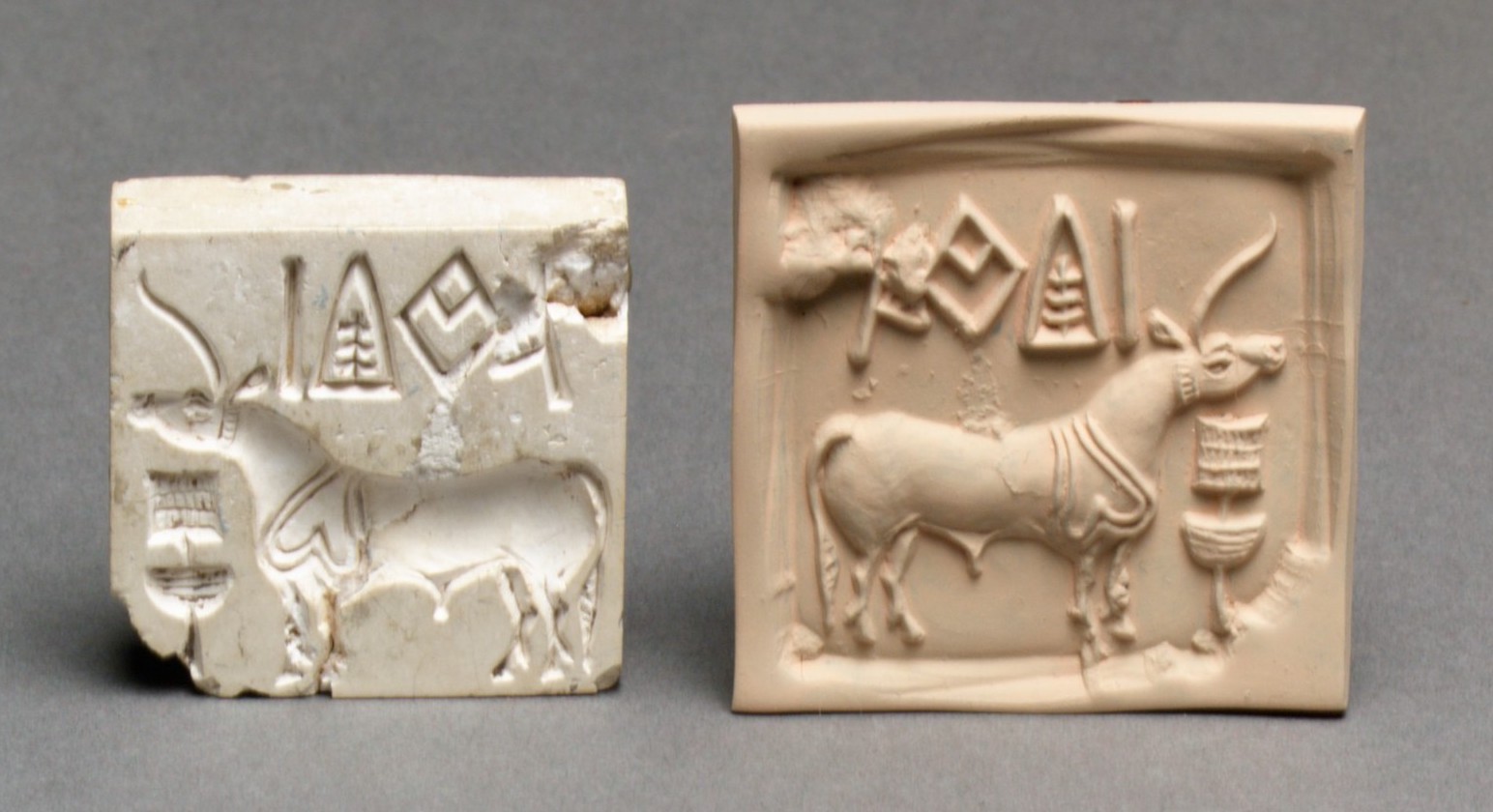
Stamp seal and modern impression: unicorn and incense burner (?), c. 2600–1900 B.C.E. (Mature Harappan), burnt steatite, 3.8 x 3.8 x 1 cm (The Metropolitan Museum of Art, New York)
Typically, the front of the seal is carved in intaglio so that a positive imprint is produced on the material on which it is impressed. The seals were used to stamp clay insignia on ropes, to seal and secure packages during transportation, and by traders and merchants to designate their goods by name, place of origin and so on.
Their discovery from sites beyond the known Indus Valley region—such as Kish and Umma in present-day Iraq—is indicative of an early system of trade with other societies such as the Mesopotamian Civilization of Western Asia. On the other hand, the purpose of the terracotta figurines remains unclear, as do their stylistic origins. In the absence of textual sources, scholars look for answers by comparing them to contemporaneous Mesopotamian examples and later South Asian art.
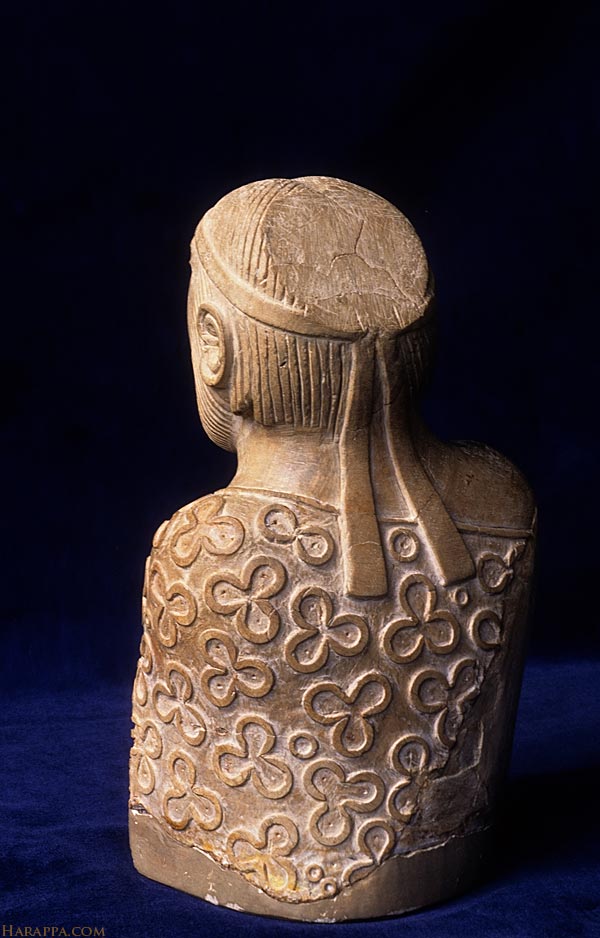
Priest King, Mohenjo-daro, white, low fired steatite, 17.5 x 11 cm (photo: Harappa.com; National Museum, Karachi)
Stone sculptures such as the Priest-King are relatively rare and possibly only represent a small fraction of the stone objects that might have been produced by the Indus Valley Civilization. The sculpture is made of steatite, an easy-to-carve stone used extensively by the Indus Valley inhabitants to make seals, beads, tablets, as well as statues such as this one, although the latter are much rarer. The civilization also attained a high level of technical sophistication in manufacturing steatite objects starting from the Neolithic period, employing the controlled use of fire to whiten and harden the stone. The Priest-King, too, is made in this manner.
Let’s take a closer look at the sculpture to understand whom it may represent and how we might interpret it.
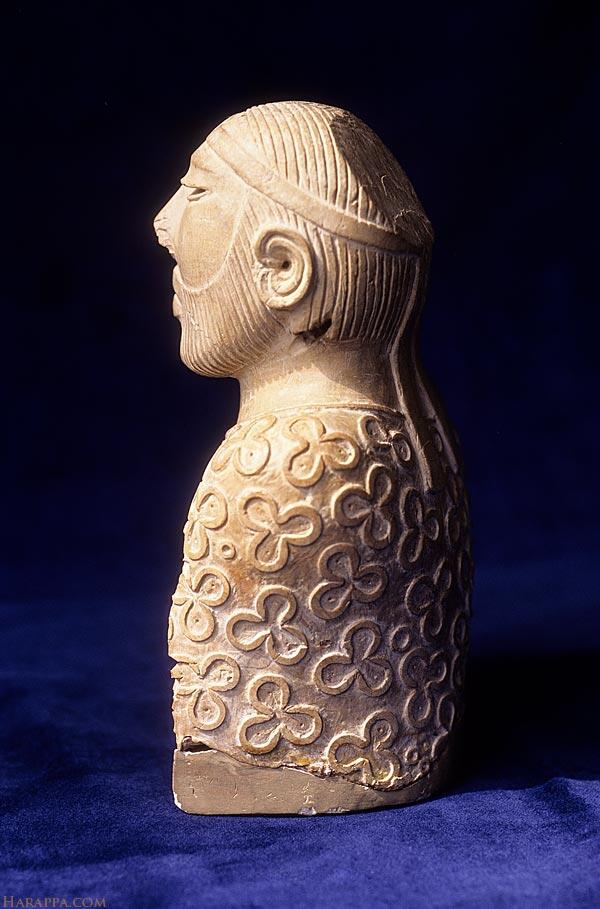
Priest King, Mohenjo-daro, white, low fired steatite, 17.5 x 11 cm (photo: Harappa.com; National Museum, Karachi)
Who was the Priest-King?
Many scholars have attempted to establish the figure’s identity and status. Some have studied its physiognomic type, concluding that its treatment of the beard, which differs from later examples of South Asian art, might mean that the figure depicts a foreigner. Additionally, garments covering only the left shoulder were also commonly seen in art from the Mesopotamian Civilization, which was situated around 3000 kilometers away from the Indus Valley Civilization but had trade links with it.
Similarly, the trefoil motifs have also been compared to the cloud motif seen in ajrakh block-printed fabrics which were being produced for export around the time the statuette was made. The trace of red pigment found on the shawl gives us early evidence of the use of madder, a type of natural red colorant extracted from the roots of the Indian madder plant, used by the Indus Valley dyers to produce ajrakh cloth with red patterns. However, some scholars argue that what we see on the shawl is not a patterned cloth, but evidence of early embroidery, as the trefoil forms are raised.
The sculpture’s half-open eyes have led to speculation that the figure is engaged in yogic meditation, although scholars cannot confirm that yoga and its associated rituals were practiced in that period in the same way that it is practiced today. The extended arm may have been meant to rest on the knee, with the body arranged in a seated posture.
Holes pierced under the ears suggest that a headdress might have been attached to the sculpture. This could have been a horned headdress, similar to that worn by the figure on the famous Pashupati Seal, who is thought to possibly depict a prototype of the Hindu god, Shiva.
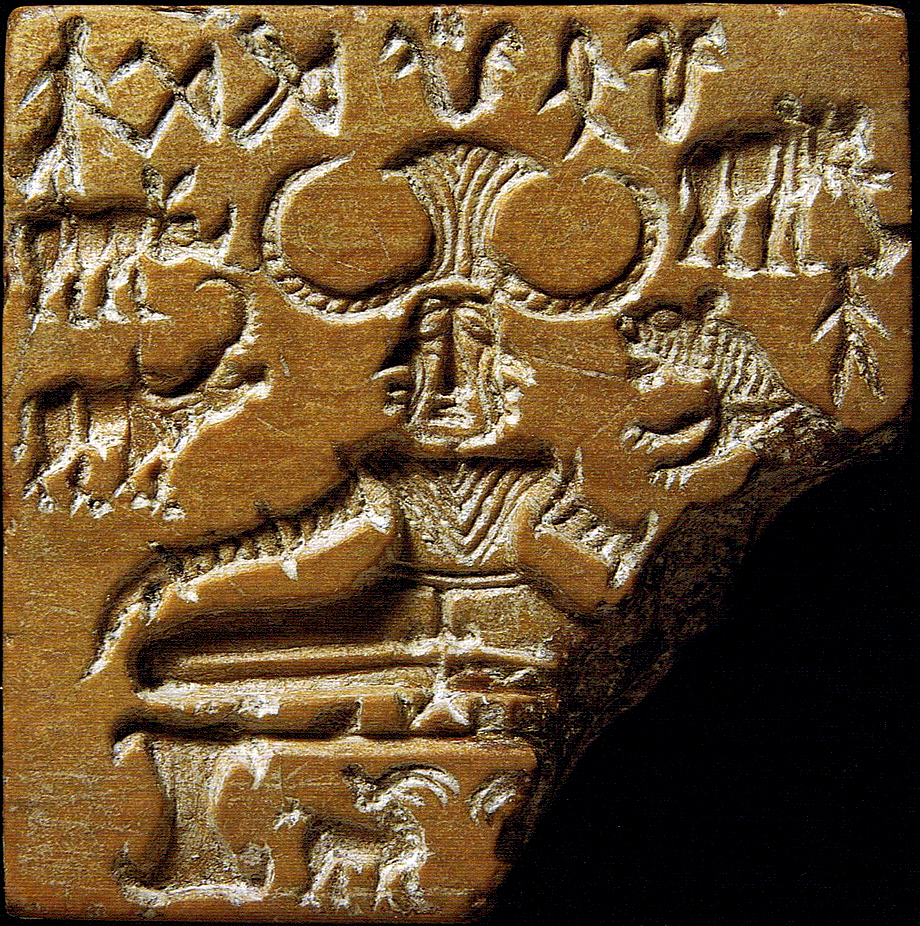
Pashupati Seal, 2500–2400 B.C.E. (Mohenjo-daro, Indus Valley Civilization), steatite, coated with alkali, and baked (National Museum New Delhi)
Archaeologist John Marshall considered these factors when he dubbed the statuette a “king-priest,” which archaeologist Mortimer Wheeler later inverted to “priest-king.” Wheeler’s name for the figure was based on his assumption that the Indus Valley Civilization had socio-cultural affinities with Mesopotamia, with a social structure that was governed by authority figures that were akin to the priest-kings or governors of Sumer.
However, until we have a better understanding of the cultures of the Indus Valley, it is not possible to confirm whether the sculpture is a portrait of a deity, a historical figure, or a representation of an abstract concept. In spite of that, this small object exudes a sense of quiet authority and offers us an important insight into the mastery Indus Valley craftspeople had over sculpting steatite.
Artifacts from Mohenjo-daro were initially kept at the Lahore Museum and later moved to the Central Imperial Museum in Delhi (now the National Museum, New Delhi). In 1972, the statuette was officially handed over to the Government of Pakistan as per a clause in the Shimla Agreement, a peace treaty signed by India and Pakistan in July 1972. At the time of writing, the sculpture is housed in the National Museum at Karachi.
Drawing from articles on The MAP Academy

